Recent Fire Damage Posts
3 Alternatives to Candles in Your Home
2/25/2022 (Permalink)
 A wax warmer is one of many popular candle alternatives.
A wax warmer is one of many popular candle alternatives.
Candle Alternatives
A fire in your home in Chalfont, PA can be disastrous, and candles are a common cause of home fires. Although candles can add a pleasant scent to your home, there are various candle alternatives that are considered to be safer.
1. Oil Diffusers
Oil diffusers are simple to use and can help to promote a calming atmosphere in your home. A few drops of essential oils are added to water, and the diffuser will distribute the oils into the air in your home. Essential oils come in a wide range of fragrances, though it’s often important to make sure the oils you use are safe for pets and young children. Oil diffusers come in many styles, making it easy to find a diffuser that fits in with your home.
2. Wax Warmers
A wax warmer is one of many popular candle alternatives. A wax warmer allows you to experience the fragrance of your favorite candle while minimizing the risk of a fire. Wax warmers are often inexpensive, and many stores offer their signature candle fragrances in waxes. If you have a candle that you don’t want to go to waste, it’s also possible to remove the wax from a candle and place it into the wax warmer.
3. Candles Without Flames
Candles often add a feeling of coziness to a home, but the risk of a candle fire can make candles less enjoyable and safe to use. However, flameless candles are often an excellent alternative. Candles without flames can still provide a warm glow to an area and can appear extremely realistic. Unlike regular candles, however, candles without flames are long-lasting and do not need to be replaced frequently.
Oil diffusers, wax warmers and candles without flames are candle alternatives that offer many of the benefits of candles without the risk of causing a fire. Many people whose homes have been damaged by a fire find it helpful to contact fire damage restoration professionals.
3 Ways To Clean Contents After a Fire
1/31/2022 (Permalink)
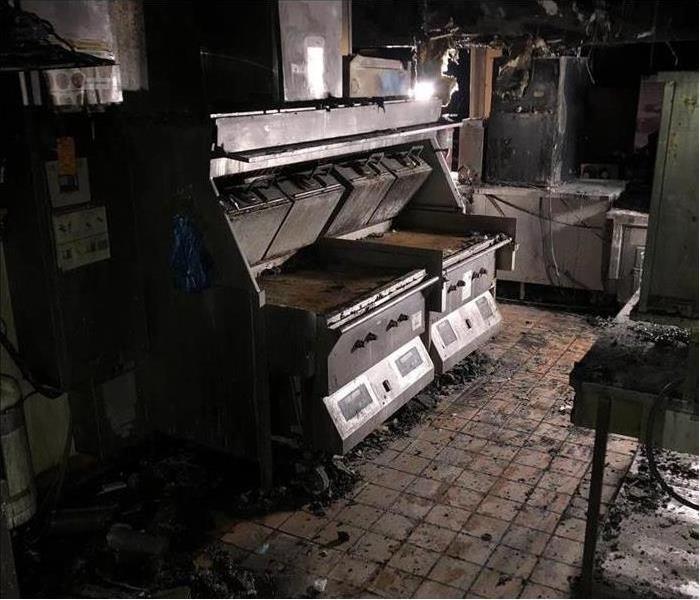 Commercial fire damage in a kitchen in Chalfont, PA.
Commercial fire damage in a kitchen in Chalfont, PA.
Cleaning Your Contents After a Fire
Even without catastrophic structural damage, a fire can wreak havoc on your property. From smoke damage, to water damage from firefighting efforts, there’s a surprisingly long list of ways that fires create a mess. The good news is there are lots of options for cleaning up your content, from elaborate fire restoration to simple dry-cleaning. Here are a few of the ways you can get your Chalfont, PA, property back to normal.
Fire damage typically evokes thoughts of broken windows and burnt through roofs. But fire damage also often includes:
- Smoke damaged clothing and personal property
- Water logged carpets and furniture
- Soot stained upholstery and carpeting
And that’s just for starters. Fortunately, there are professionals there to help.
Dry-Cleaning
This simple process is one of the easiest ways to handle smoke damage. Drapes and other fabrics can be dry cleaned in place to remove the pervasive smell of smoke, soot and burned goods as well as getting rid of stains. Be sure to choose a fire restoration or textile restoration company that specializes in fire damage for the best results.
Fire Remediation
This typically involves removing water - an important part of ensuring your business is safe for use. Water that gets beneath carpet pads and festers in walls can become a breeding ground for mold. Fire remediation firms use suction devices and industrial dryers to get rid of every drop.
Cleanup Services
Typically offered as an add-on to remediation, cleanup services focus more on cleaning, deodorizing and restoring personal property. This can include spray and wipe cleaning, foam cleaning, abrasive cleaning, immersion and much more.
Cleaning up plays a big part in getting back to normal after a business fire. Fortunately, it’s not something you have to tackle yourself. Contract with experts in dry-cleaning, content storage and other fire content cleaning and your property will be as good as new.
What Happens When Fire and Water Damage Combine?
12/13/2021 (Permalink)
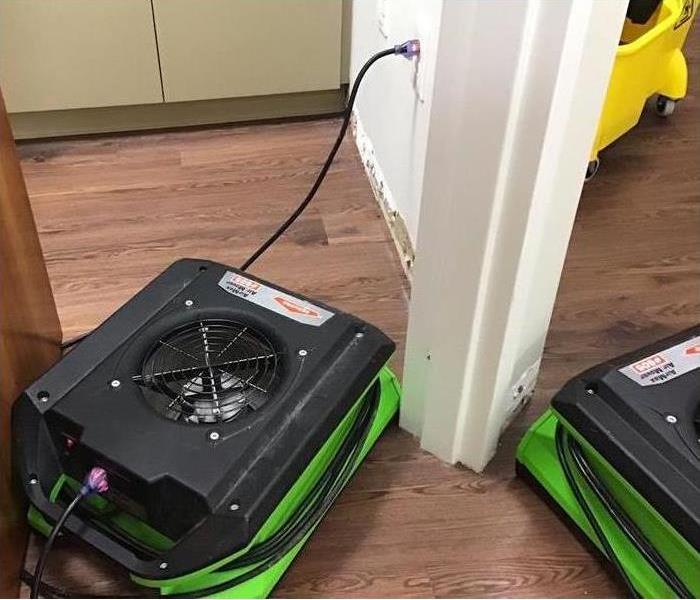 Water cleanup services in Doylestown, PA.
Water cleanup services in Doylestown, PA.
Water and Fire Damage
Fire damage can destroy building materials and contents. Standing water introduced by fire suppression efforts may cause flooring and furniture to warp and lead to mold growth. Each type of damage intensifies the other, giving rise to a situation that may be difficult for homeowners to remedy. Restoration professionals can repair and restore damage caused by this combination of factors.
Damage Caused By Fire
Fire burns building materials and contents in a structure, causing damage due to excessive heat and exposure to smoke. This type of damage calls for specialized mitigation methods, including:
- Removing ash and soot
- Repairing or replacing materials and contents
- Eliminating smoke damage
Cleanup and restoration should take place as soon as possible after a fire. The presence of water leftover from fire suppression efforts may cause a delay.
Damage Caused by Water
A fire hose can dispense anywhere from 300 to 800 gallons of water per minute. Cleaning up after a fire has been extinguished may involve:
- Pumping out standing water
- Cleaning ash and soot residue
- Drying and dehumidifying
It is necessary to remove the water before fire damage restoration can proceed. Restoration experts can do so quickly to limit the amount of combined damage and the risk of mold growth.
Combined Damage
Fire and water damage can ruin delicate or porous contents and materials. The following measures may be necessary:
- Tearing out and replacing building materials
- Using specialized content cleaning methods
- Taking measures to prevent corrosion or rot
The presence of both types of damage can pose a challenge to homeowners. It is best to hire a mitigation and restoration company to get the job done.
Fire damage and water damage are likely to be present after a fire at a home in Doylestown, PA. It is important to act quickly to clean up and mitigate both types of damage to prevent conditions from worsening.
4 Fire Safety Tips for Cooking on the Grill
11/9/2021 (Permalink)
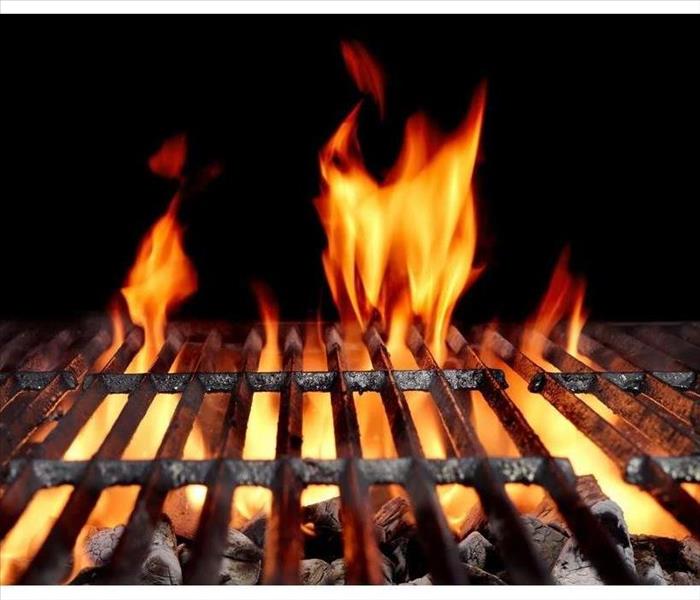 Avoid an outdoor fire while cooking.
Avoid an outdoor fire while cooking.
Avoid Outdoor Fires While Cooking
There are few things as satisfying in the summer as the smell of a good grill fire with your favorite foods on the barbeque. Unfortunately, those great summer experiences can quickly turn into bad memories if the grill isn't used properly and dangerous fires occur. Use the following safety tips to avoid the wrong type of outdoor fires while cooking.
1. Keep Your Grill Away From Combustible Materials
Many Buckingham, PA, homeowners store their grill up against the house or against the deck railings. Don't be tempted to use the grill in that position; if for no other reason than avoiding smoke damage. Make sure there's plenty of space around the grill, including moving it away from overhanging eaves and branches. This should also include keeping children and pets away from gas and open flames.
2. Regularly Clean the Barbeque
One of the easiest ways to avoid a surprise barbeque fire is to remove the buildup of grease and fat that accumulates over a summer's worth of cooking. The sizzle of juices dripping onto hot coals is great while you're attending the fire, but it's nearly as much fun when you're caught off-guard by a grill fire.
3. Don't Leave Your Grill Unattended
Whether you're using a charcoal grill or a gas barbeque, don't assume it can run safely without your supervision. Fire remediation professionals stress than an appropriate cooking fire can quickly grow out of control (even on gas grills), so keep an eye on the barbeque until the unit has been safely turned off and the flames have all been completely extinguished.
4. Contact a Professional If Something Isn't Right
Whether it's the smell of gas or you hear an unusual sound when oy turn the propane tank on, move away from the grill and contact a professional with experience handling a grill fire. Your safety is the most important thing on the calendar during the summer. Protect it by following these safety tips when you decide to cook over an outside fire.
How To Prepare Your Company for a Possible Fire
9/9/2021 (Permalink)
 A fire preparation plan can help you protect both your assets and your workers during an emergency.
A fire preparation plan can help you protect both your assets and your workers during an emergency.
Protect Your Company From a Fire Disaster
A commercial fire can disrupt your Chalfont, PA, business in several ways. Your inventory or equipment could be destroyed. You also may have to temporarily shut down the premises while cleanup and restoration professionals rebuild the property. This could greatly reduce your cash flow and put your company at risk of closing. That is why you need a proper fire preparation plan.
Making a strategy in advance can limit the impact a fire will have on your business. Below are some ways you can protect your company from a fire disaster.
1. Create Recovery and Emergency Plans
Everyone in your company should know what to do when a fire or similar disaster strikes. Managers should have specific assignments, and employees should understand how to safely escape the building.
Your disaster preparation plan should also describe the steps for recovery. Specifically, the plan should detail how you will reboot your business once the crisis has ended.
2. Check Your Insurance
A proper insurance policy can prevent a fire from bankrupting your business. Make sure that your assets such as computers are insured for their replacement costs. You may want to buy separate equipment or building insurance as part of your fire preparation strategy, as well.
A business interruption policy can also be valuable. This type of insurance gives you cash to help your company stay afloat during the restoration.
3. Perform a Risk Analysis
It is easier to mitigate a disaster if you know what to expect. You should thus do a risk analysis to see how fire damage would impact your business. You can do this analysis for other types of emergencies such as floods and windstorms, as well.
No matter how hard you try to keep your building and employees safe, a disaster can still occur. A fire preparation plan can help you protect both your assets and your workers during an emergency.
Top 6 Fire Safety Tips For Children
7/15/2021 (Permalink)
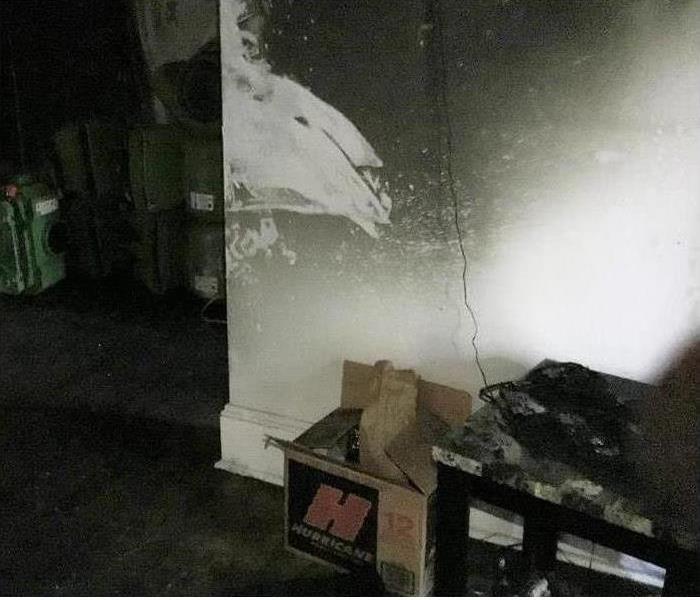 You can help your children by properly educating them on fire safety.
You can help your children by properly educating them on fire safety.
Safety Tips For Children
If the fire alarm went off in your home, would your children know what to do? Would kids know where the family could go for safety? Parents often forget that children are not intuitively aware of how to escape from the building during a home fire. Nor are children aware of how quickly a fire can spread. To help ensure kids safety, take time to review these top eight fire safety tips for children.
1. Windows can be escape routes. Small children may not be able to open a window, but they can be taught to go to a window and wait for help.
2. Practice feeling the way out of the house. Check with your local fire repair professionals to see if they give classes to older children on how to exit a house at night in the dark.
3. Find the ladder to escape from upstairs. Teach children where to find a fire escape ladder on the second floor and how to navigate the rungs.
4. Smoke detectors can be your friend. Explain what the noise is when the smoke detector goes off, and let children know what to do when they hear the sound.
5. Don’t open doors and stay low. Children of all ages need to know not to open doors during a fire. Little ones should also understand that kids safety can depend on crawling along the floor instead of standing up.
6. Once you get out of the building, stay out. Often children want to go back into the house for a favorite toy. To prevent this, explain the necessity of staying out of your home and gathering at a prearranged meeting place.
Teaching your children these six escape tips can make the difference in how the little one copes in a disaster scenario in Chalfont, PA. Practice can also ensure the children are familiar with the potential situation and know what steps to take rather than standing and yelling for a parent. Kids safety can be difficult to ensure, but you can help them understand how to find a safe way out of the building.
How To Train Employees In First Aid for Burns
6/2/2021 (Permalink)
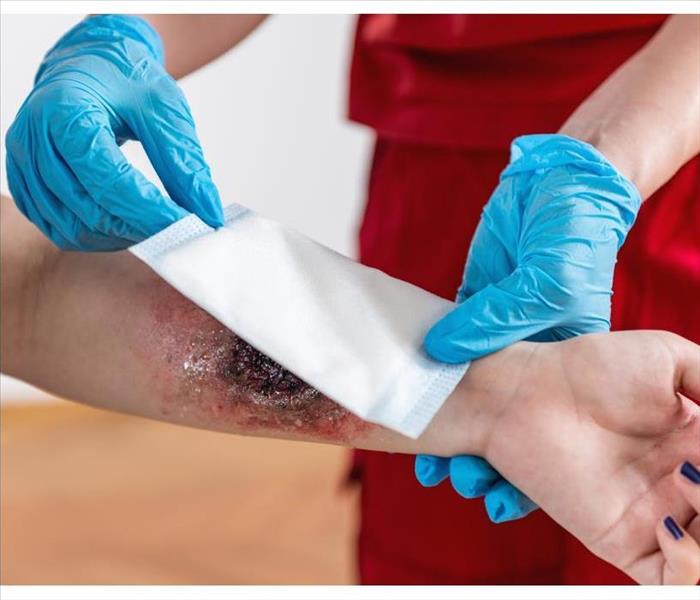 Treating burns requires skillful first aid and supplies.
Treating burns requires skillful first aid and supplies.
Learn How To Care For Minor and Major Burns
First aid is an essential aspect of disaster response. In the event of fire damage, early care can prevent burns from becoming more severe. Learn how to care for minor and major injuries and provide medical response training for employees.
Caring for Minor Burns
A minor burn covering an area no larger than three inches in diameter should be treated as soon as possible after the injury has been sustained. An employee should be prepared and equipped to take the following steps:
- Apply a cool compress
- Hold the burn under cool running water
- Remove tight jewelry or garments
- Do not break blisters
- Apply soothing moisturizer
- Lightly cover the burn
These measures can limit cellular damage. If a blister breaks, clean the area and apply antibiotic ointment before re-bandaging with sterile gauze. With proper burn first aid, minor burns may not require emergency care.
Protecting Major Burns
Major burns suffered during fire damage require medical attention. Ensure the safety of the injured individual until emergency help arrives. Remove any restrictive items and cover the burn with a moist sterile gauze bandage or clean cloth. Elevating the burn above the heart level may be helpful, but immersion in cool water is not advisable. Severe burn victims may require rescue breathing and could be at risk of going into shock.
Training for Medical Response
A business or commercial property owner may want to schedule medical response training. This training should be conducted by a qualified expert. The medical response is an important aspect of limiting damage due to disasters.
Treating burns requires skillful first aid and supplies such as sterile gauze bandages, soothing moisturizers, and antibiotic ointment. Whether fire damage to a commercial building causes minor burns that can be handled on-site or major burns that require emergency medical help, medical response training supports the health and safety of a workplace located in Buckingham, PA.
What To Do If You Smell Natural Gas In Your Home
4/8/2021 (Permalink)
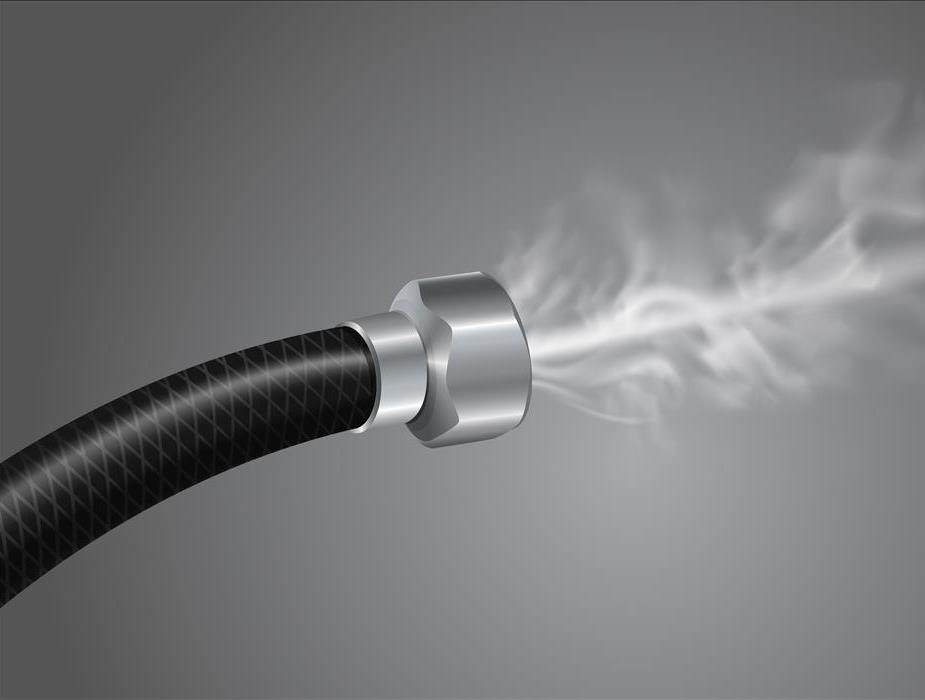 Natural gas is odorless, colorless, and nearly impossible to detect.
Natural gas is odorless, colorless, and nearly impossible to detect.
Ways To Prevent A Gas Fire From Breaking Out
Have you ever smelled natural gas? That’s a bit of a trick question. In its raw state, natural gas is odorless, colorless, and nearly impossible to detect. It’s also highly flammable — a dangerous combination. To reduce this danger, gas companies add a non-toxic chemical called mercaptan into the gas before distribution. Mercaptan is the source of that distinctive, “rotten egg” smell that most people associate with gas. The scent is unpleasant, but it makes a gas leak much easier to detect. If you ever smell mercaptan in your home, follow these precautions to prevent a gas fire from breaking out.
1. Keep the House Dark
Depending on the severity of the leak, any electrical current could spark a gas explosion. Don’t turn on any lights or other electrical devices. This includes battery-operated devices such as cell phones and flashlights. Never ignite a lighter or match.
2. Check Your Stove Knobs
A gas stove is one of the most common culprits of a gas leak, since bumping a knob can accidentally turn on the gas. Check the knobs on your stove to ensure that they are all in the “off” position.
3. Open Windows and Doors
Ventilating your home may help release some of the gas buildups that could lead to a gas fire. Open doors and windows, but only if you can do so quickly.
4. Get Out of the House
Evacuate the house, including pets. Do not start your car, especially if the car is in an attached garage. Don’t turn on your phone until you are a safe distance from the house.
5. Contact Authorities
When you are your family are safe across the street or down the block, call 911 or other emergency response service for Buckingham, PA, then call your gas company. Stay nearby and wait for help to arrive.
A home fire can be devastating, and fire damage cleanup is often long and arduous. Sticking to these tips will help minimize your risk of a gas fire.
How To Use A Fire Extinguisher?
12/14/2020 (Permalink)
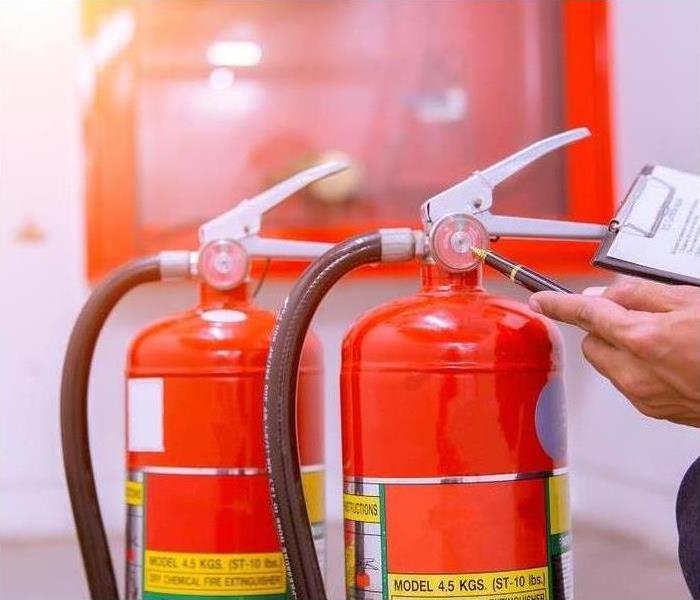 Everyone in a household should know how to use a fire extinguisher
Everyone in a household should know how to use a fire extinguisher
How To Use A Fire Extinguisher?
One of the things everyone in a household should know is how to use a fire extinguisher. Hopefully, you will never have to use this knowledge, but the proper application of a fire suppression device can prevent a lot of heartache later on.
Step 1: Decide What's Best
Your first decision should always be whether you should try to use an extinguisher or get safely out of the home. If the fire is very small and unlikely to spread, use it. If the fire is spreading rapidly, get to safety. Never try to extinguish a fire that is completely out of control. Suffering fire damage is much better than getting hurt.
Step 2: Check the Type
Get the right type of extinguisher. If you have a fire extinguisher in your home, chances are you have one for common house fires. Common extinguisher types include:
- Type A - wood, paper, rubber, cloth, and plastic
- Type B - gasoline, paints, and solvents
- Type C - electrical fires
- Types D and K - industrial chemicals and oils like those used in businesses or restaurants
Most household devices are labeled A, B, and C. If you don't remember the types, just make sure yours is a multi-use extinguisher. This step is particularly important in a kitchen fire because some types will not put out a grease fire.
Step 3: Use the PASS Method
The PASS method stands for pull the pin on the fire extinguisher. Then aim the nozzle and squeeze the handle. The final step in PASS is to sweep the spray from side to side. If your instruction manual says something different, always follow the instructions that came with your extinguisher.
Step 4: Clean Up the Mess
Even if you use fire suppression devices, you will still have smoke and some fire damage. In this case, you are best off calling a company that specializes in fire cleanup in Doylestown, PA.
No matter what, it is always better to call the fire department than it is to get hurt. Never try to put out a fire that is spreading fast or seems out of control.
How Fire Damage Is Estimated
11/4/2020 (Permalink)
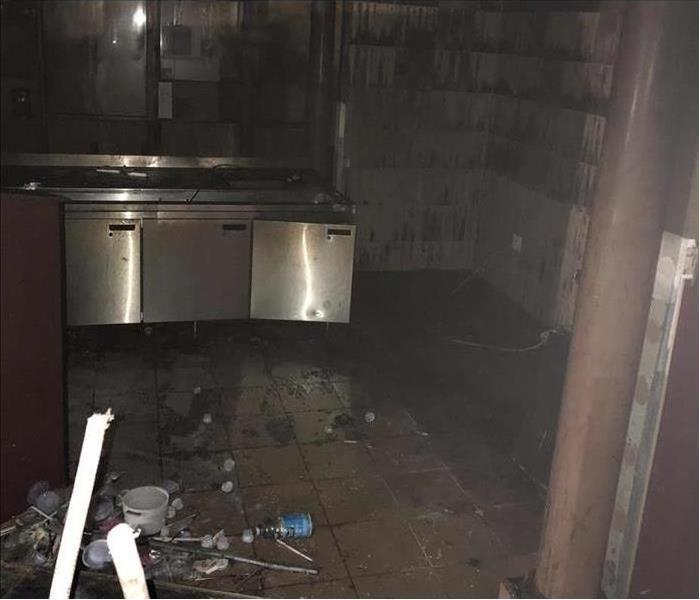 Kitchen fire damage in New Briton, PA
Kitchen fire damage in New Briton, PA
How Fire Damage Is Estimated
After your commercial property in New Briton, PA, suffers a fire, you need to find a fire restoration company that can help restore your structure to safe conditions. A fire damage estimate involves more than simply items and property damaged in the fire. Here are some of the additional services considered in that figure.
1. Emergency Adjustments
If there is water damage from the fire department putting out the fire, all water will be removed before your building is sealed up. Any missing pieces of the roof will be covered with a temporary tarp. Windows, doors, and damaged walls will be boarded up. Closing up the structure prevents theft and any additional damage from the weather.
2. Cleaning
Once your structure is protected from intrusion, the property will be assessed for fire and water damage. The estimate will include all cleaning, deodorizing and packing needed in order to start rebuilding. It will include all chemicals and products needed to perform the removal of odors from smoke and fire. The physical removal of hazardous debris is an essential piece of the process.
3. Reconstruction
After cleaning comes rebuilding. All damage will be assessed to determine what can be repaired and what will need to be rebuilt. Removing and storing furniture and other salvageable items so that reconstruction can safely occur is part of the process. Anything that has been damaged beyond repair will be rebuilt to restore your property to safe conditions.
Make sure any estimate you are given after a commercial fire includes all aspects listed above so that you are not surprised by additional charges later. Check with your insurance to see if you are covered for fire damage. A good fire restoration company will work with you or your insurance adjuster throughout the process to make sure that you have a full inventory of all damage and reconstruction required so that you may file a timely insurance claim.
How Often Should I Clean My Furnace?
9/25/2020 (Permalink)
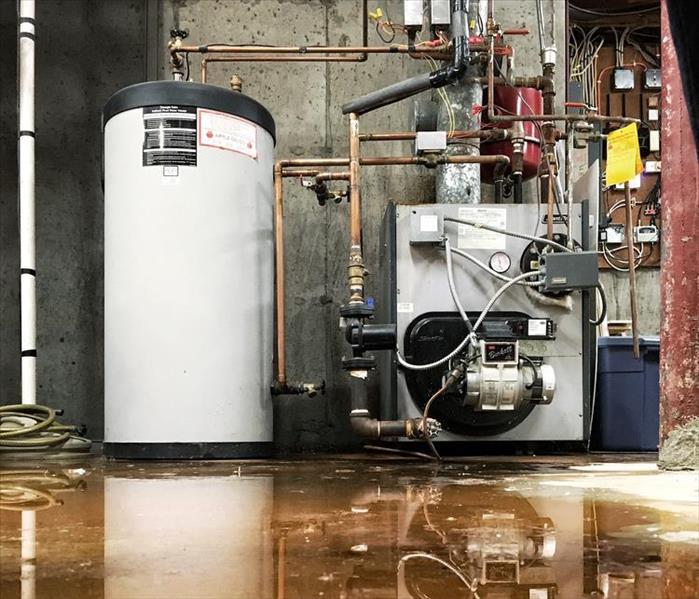 Keep your furnace clean and maintained to avoid any flood
Keep your furnace clean and maintained to avoid any flood
Like any system with moving parts, furnaces need maintenance. Those that are maintained will run smoothly and rarely need repair. Regular maintenance is not hard to do, so keeping up with a cleaning schedule should be fairly easy. To avoid unnecessary risk of damage or fire, cleaning the unit should happen on a schedule, allowing for a warm, comfortable environment in New Briton, PA, for many years.
There are Four Main Types of Furnaces:
- Electric
- Natural gas
- Oil
- Propane
When is the best time to clean a furnace?
At the beginning of the Season
Dirt is the enemy of a heating system. A neglected system can be overloaded, so to avoid compromised airflow and the risk of fire, cleaning the unit is essential. The filter, blower, and blower motor are the critical areas to keep clean. If the homeowner is not familiar with disassembling the unit, a professional HVAC service can help. The filter should be changed at the start of cooler weather before the furnace runs on a regular basis.
Once a Month During Continuous Use
The filter traps dirt, dust, pet hair, and tobacco smoke, cleaning the air before it enters the unit. Pets, children, and tobacco smokers influence how often the filter will need changing. Remove the filter and inspect it in the light. If it appears very dirty or clogged, replace it.
At the End of the Season
As the season changes to warmer weather, look over the unit's critical areas. See if continuous use has caused any dirt to settle inside. Change the filter.
While there is a low risk of a furnace causing a fire, cleaning and inspecting the system on a regular basis will help prevent a dangerous situation. If the unexpected happens and there is a fire around or near the unit, file a claim with your insurance company and ask for authorization of a fire remediation company. A furnace unit that has been inspected and maintained will give homeowners comfort during many cold-weather seasons in New Briton, PA.
What Is and Isn’t Covered After a Fire
6/23/2020 (Permalink)
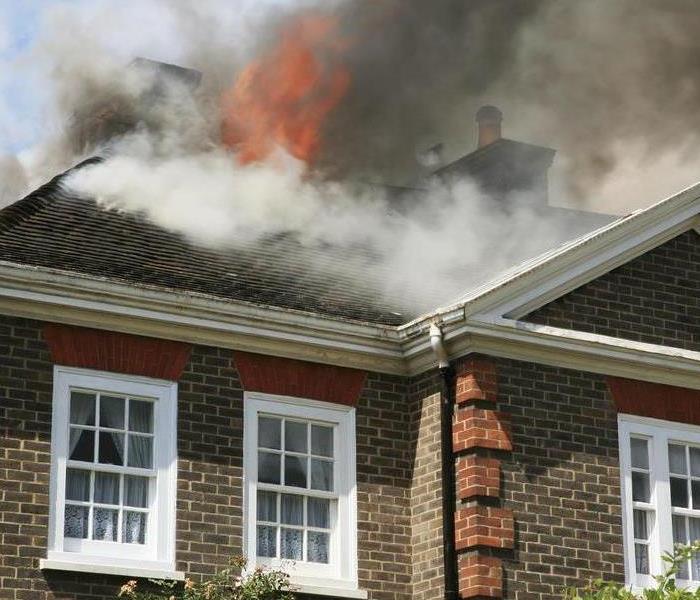 A home fire can be a devastating event.
A home fire can be a devastating event.
If a home fire breaks out, homeowners in Buckingham, PA, can usually depend on their home insurance to help them through the trying time. Understanding how much help and what is and isn’t covered is important to know before an incident even happens. Although every policy is different, standard policies usually have similar coverage.
What Is Covered?
For people residing in the property they own, a basic policy will provide coverage in the case of an accidental fire or lightning strike. It often includes four categories.
Main Dwelling: Both partial and complete damage may be covered. Insurance will assist with the cost to rebuild or repair the home. If there isn’t a complete loss, fire and smoke remediation and restoration expert will need to be contacted for proper repairs.
Other Structures: If your property includes sheds, detached garages, or other unattached structures, they are typically covered by insurance. That usually includes repair or rebuild costs, as well as debris removal.
Personal Property: Most policies have a maximum limit for personal belongings, which may include furniture, electronics, and clothing. Some items, such as jewelry, often require an additional policy.
Loss of Use: Even a small fire creates massive repairs. From eliminating the smoke damage to replacing walls, it can take a while before your home is livable. Many policies provide living expenses during the repairs. This may include the cost of a hotel or rental and groceries.
What Isn’t Covered?
While the typical home fire is caused by accident or nature, arson is another story. If a homeowner purposely sets a house ablaze, don’t count on insurance providing any assistance. For homeowners with multiple properties or in the middle of a move, a vacant home fire may not be covered. Homes that will be vacant for more than 30 days will likely require a vacant homeowners insurance policy. While it is an added cost, it does provide peace of mind against vandalism.
A home fire can be a devastating event. While hopefully, one doesn’t happen, understanding your insurance policy beforehand makes recovering a lot easier.
Home Fire Damage: What To Expect in the First Few Hours
6/4/2020 (Permalink)
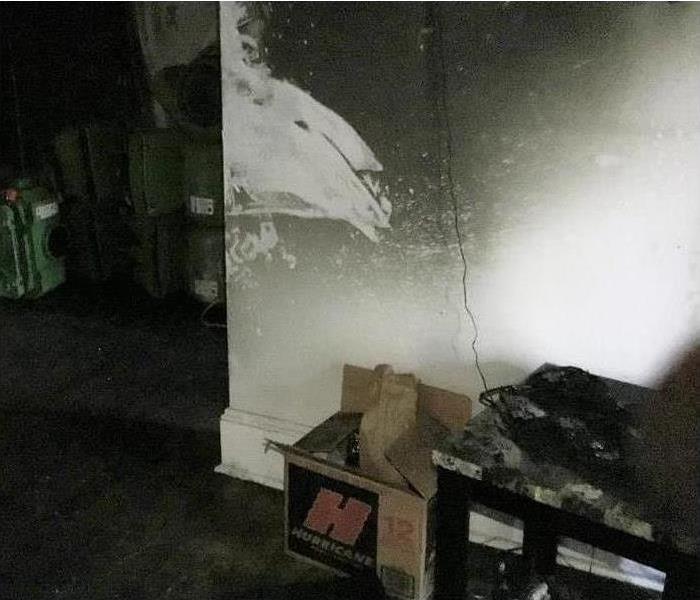 Fire damage in Doylestown, PA
Fire damage in Doylestown, PA
Recovering from a home fire is often a lengthy and stressful process. Fire and smoke damage can cause significant property destruction and inconvenience. This discussion may prepare you for what occurs once the fire is out.
Safety Inspection
When fire professionals determine the fire is safely extinguished, they will survey the damage to determine when residents can enter. The inspection will likely include these elements:
Electrical System – Your electrical panel will likely need to be disengaged until the damage is assessed and water is completely removed. When fire cleanup begins, a generator or other safe power source will be provided by fire restoration crews.
Hazards – Fires can create dangerous structural obstacles or chemical spills. These hazards will be cordoned off by fire professionals before you can enter the home.
Structural Damage – The structural integrity of your floors, walls, and stairways will be assessed. There may be areas of your home you are unable to enter right away.
The fire inspector will enter the home with you and will explain the scope of the damage. From there, you can begin gathering the help you need to for the fire cleanup and restoration phase.
Professional Assistance
Most fires cause enough damage that a fire restoration service is needed to perform the cleanup. Specialists are trained to safely clean, dry, and disinfect your property. Attempting the cleaning yourself is discouraged unless you have very minimal damage.
Insurance Consult
Once you understand the extent of the damage, it’s important to contact your homeowner’s insurance agent. They are a good resource and can answer many of your initial questions. They will outline the process for initiating a claim and explain the parameters of your coverage.
Experiencing a fire, followed by fire cleanup and property restoration is a disruptive experience for your entire household. It is helpful to allow fire inspectors, insurance agents, and fire remediation experts help you through the first few hours and days of the aftermath. They are your best resources for keeping the process moving as you return your Doylestown, PA, home, and household to normal.
What to Do When Your Business Is Impacted by Smoke Damage
3/15/2020 (Permalink)
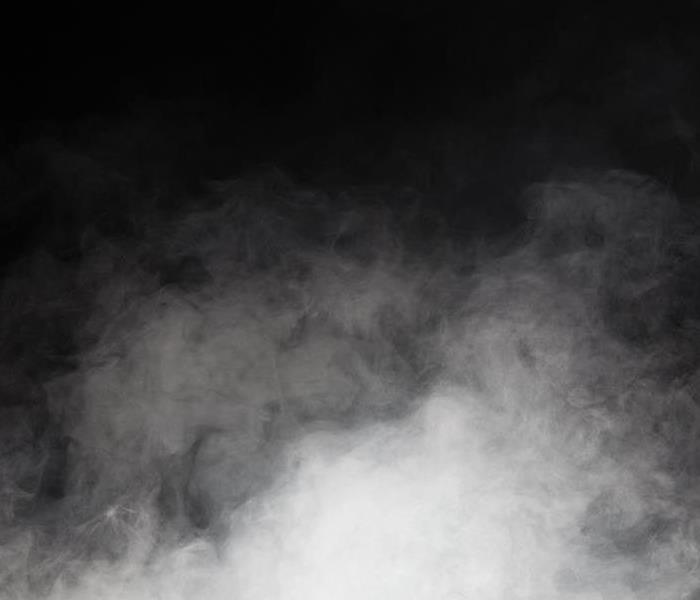 Your business can return to normal in no time when you trust smoke damage experts to do the job.
Your business can return to normal in no time when you trust smoke damage experts to do the job.
No business owner wants to discover that his or her building has been affected by smoke damage. However, it’s important to take action as soon as possible to prevent the smoke from spreading to other parts of your business. While you’re waiting for commercial building restoration services to arrive, be sure to take the following steps to mitigate further damage and keep your Doylestown, PA, business safe.
Direct Smoke Away From the Building
The first thing you should do when dealing with smoke or soot damage is to direct it away from your building. Be sure to do the following to prevent smoke from continuing to spread through your business:
Turn off your air conditioning unit
Open all the doors and windows in the building
Turn on fans and point them towards the open windows and doors
These steps can help to ensure that the smoke damage stays under control. In addition, you can keep your business well ventilated by opening doors and windows and keeping your fans running.
Wipe Down Surfaces
By leaving traces of smoke particles in your building, they run the risk of spreading throughout your business. Use a rag to thoroughly wipe down any surfaces in your building that have been affected by smoke, such as countertops and desks. This can help to keep further damage at bay until help arrives.
Remove Valuable Items
If any valuables that belong to you or your employees are found in a smoke-affected area, be sure to remove them right away. This prevents the items from sustaining further damage as a result of smoke or soot. After you’ve moved your valuable items elsewhere, be sure to contact an expert to handle them properly.
With the help of a professional smoke cleaning, your commercial building and its contents can be taken care of appropriately. Your business can return to normal in no time when you trust smoke damage experts to do the job.
Fire Restoration Process
3/8/2020 (Permalink)
 A house fire in Doylestown, PA, can be a very distressing experience.
A house fire in Doylestown, PA, can be a very distressing experience.
A house fire in Doylestown, PA, can be a very distressing experience. However, it is important to begin the fire restoration process as soon as possible to prevent further damage. The following outlines the steps to take after the fire has been extinguished and everyone is safe:
1. Call the insurance company. If you have fire insurance, let your insurance company know about the situation so that they can begin the claims process. They will also let you know of any special requirements for documenting the damage and send an agent to assess your property.
2. Temporarily cover openings. The fire-extinguishing efforts may have damaged windows, doors or the roof. If there are any holes, it is important to tarp or board over them to keep out wildlife, criminals and bad weather during the fire restoration process.
3. Dry out the structure. The water from the fire-extinguishing efforts can begin to grow mold in as little as 24 hours. You may need to use specialized pumps or vacuums to remove the standing water. If there is still moisture present, you can use fans or a dehumidifier to speed the drying process.
4. Clean up smoke and soot. Smoke and soot will have gotten everywhere affected by the fire. There are special cleaners designed to remove this residue. Even after removing all the visible soot, you will have to do further smoke cleaning to eliminate the smell. Run air filters, ozone machines or thermal foggers to remove the particles from the air and deodorize the area.
5. Repair and replace damaged items. After everything is clean and dry, you can begin restoring the damaged items. Some repairs you may be able to do yourself, but others might require specialized techniques.
Fire restoration can be a very intensive process. If you feel overwhelmed, you may wish to hire a certified restoration team to help you get your home back to normal.
3 Reasons To Board Up Your Home After a Fire
2/28/2020 (Permalink)
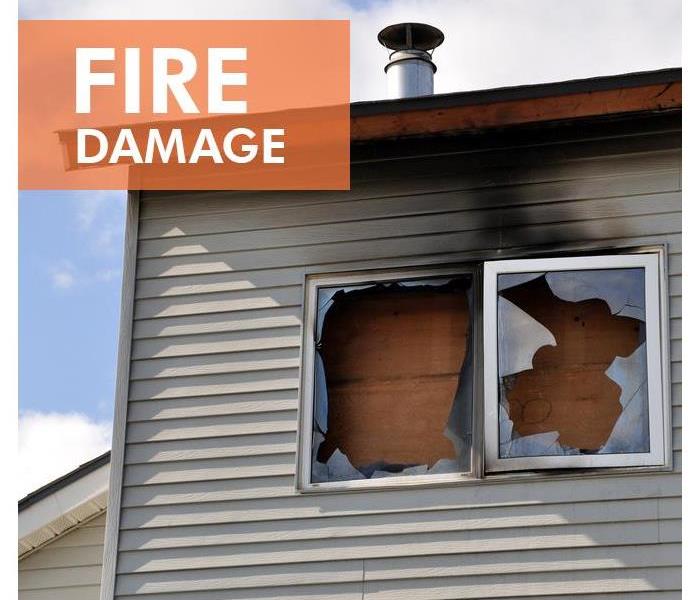 Board up to avoid more trouble
Board up to avoid more trouble
Three Reasons To Let The Specialists Help You
It's hard to see the soot and ash of the place you call home. Within minutes, you went from having a roof over your head to feeling at a loss for where to go and what to do. Before you head over to stay with family or friends, contact a fire restoration company in Chalfont, PA. Experts know how to handle your property. They can board up your home, offering you peace of mind. Here are three reasons to let the specialists help you.
1. It Keeps Out Intruders
As the fireman leaves, the restoration team can work on your emergency board up needs. The experts should assess vulnerable zones, particularly windows, the roof, and walls. Any sections with gaps or cracks should have something placed over them. If left open, animals could enter, seeking residence in your place. In addition, thieves may see this as an opportunity to look for belongings, sneaking inside and taking what they like; therefore, boarding up is the first step in post-fire security.
2. It Avoids Additional Damage
Your insurance agency most likely requires you to board up immediately, safeguarding the structure from further destruction. After all, the company wants to minimize the overall cost and prevent even more disaster. For example, should a storm come when the roof is exposed, rain could infiltrate through the burned shingles, saturating the ceiling and walls as well as ruining your valuables. Tarps would keep this from happening; thus, swift protective actions secure your insurance claim and avoid more headaches.
3. It Protects You From Lawsuit
When fire damage occurs, your land becomes easier to access. After all, you are likely staying elsewhere during construction, and cracks, holes, and tears simply scream easy access to both curious children and nosy adults. During their unwelcome exploration, someone could become hurt. If you haven't boarded up, you could be liable. Taking the steps to cover everything up and seal off the place is an extra step in guarding you from legal action.
Be proactive. You have enough to deal with now. Board up to avoid more trouble.
Tips for Filing a Fire Damage Claim
2/26/2020 (Permalink)
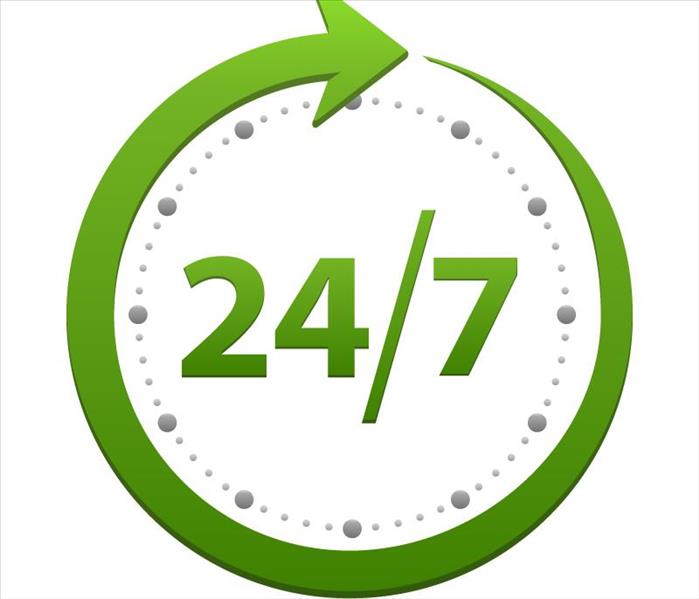 You can then focus on getting your business running again.
You can then focus on getting your business running again.
If a blaze destroys your Doylestown, PA, commercial building, you can file a fire claim with your insurance provider. Below are some tips for handling this process.
Contact the Insurance Company
Nowadays, there are several ways to contact your insurance provider. You can use the internet, a mobile app, or a traditional telephone. Tell the insurer where the fire was and provide both primary and backup contact information. You should then arrange to meet the adjuster at your building once it is safe to enter.
Photograph the Fire Damage
Avoid throwing out any items until the insurance adjuster has come to inspect your property. If you do have to discard some assets, be sure to take pictures of them to show them to the adjuster or upload online.
Don’t forget that your fire claim likely covers smoke damage, too. Photograph any belongings that have been harmed by soot or smoke, as well.
Secure Your Property
The last thing you want after a fire is for looters to come and steal your remaining belongings. Be sure to secure any broken roofs, windows or doors before the adjuster arrives. You can also make any temporary repairs that will limit additional fire or water damage.
Keep Track of Your Expenses
A commercial fire can be costly in several ways. Not only could you sustain harm to your property, but you may also have to temporarily run your business from a new location. You may also lose trucks or vans that you use to run your company. In addition, you might decide to hire a fire restoration company to assist with the cleanup. Be sure to document these expenses, as insurance money can help you pay for them.
By following the above steps, you can make the fire claim process go as smoothly as possible. You can then focus on getting your business running again.
4 Essential Components of a Fire Escape Plan
2/26/2020 (Permalink)
 A plan can only work if it clearly communicated and tested.
A plan can only work if it clearly communicated and tested.
Businesses in Doylestown, PA, know to protect their main asset—their employees— is a top priority. If a fire breaks out, fire damage professionals can get the physical structure back to working order. When it comes to employees, clients, vendors, and visitors, having a fire escape plan is essential to safety. Below are four key components every emergency escape plan should include.
1. Risk Assessment
Understand what kind of fire risks may affect your business. Even if your business operates out of an office, risks exist. A kitchen with a stove, space heaters or hot plates could all cause a fire. Older buildings could have faulty wiring unable to withstand the numerous devices plugged in.
A fire escape plan should clearly establish leaders to direct the evacuation and the other roles necessary to assist with the situation. Defined roles should include someone responsible for performing headcounts at a safe location and ensuring doors is closed, a person designated to sound the alarm and call 911, route guides to ensure a clear path, and monitors to check that every area is clear.
2. Plan Routes
Every plan should have a primary and secondary evacuation path. A map should be drawn up that shows both routes and posted throughout a facility. Additionally, a location should be designated as a safe place where everyone meets. Once at the safe location, have a plan in place to account for everyone’s safety.
3. Tool Use
Along with regularly testing fire alarms, sprinkler systems, extinguishers, and fire ladders, ensure employees know how to use them. Discuss other ways your team members can use everyday supplies to assist with a safe evacuation, such as using a chair to break a window.
4. Testing
A plan can only work if it clearly communicated and tested. Like students at school, going through a fire drill can help adults understand what an emergency situation may look like and help keep the evacuation more calm and smooth.
While hopefully your business never has to enact a fire escape plan, having one in place is vital for everyone’s safety.
How a Fire Restoration Company Keeps Your Commercial Property Safe After a Fire
1/27/2020 (Permalink)
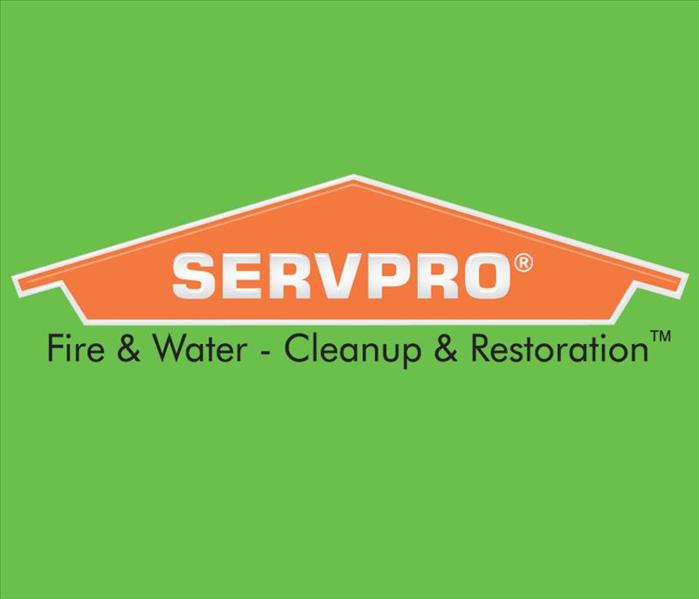 f your building was damaged in a fire, or if you are just trying to stay prepared, contact a local restoration company, and discuss your situation.
f your building was damaged in a fire, or if you are just trying to stay prepared, contact a local restoration company, and discuss your situation.
Fire restoration companies in Doylestown, PA are more than just fire cleanup specialist. While removing fire damage and restoring your commercial property to predisaster condition is their objective, they are also focused on protecting your property and your insurance claim. There are at least three services that these companies offer to ensure that your property is protected during the remediation process.
Board up and tarp services
Fencing
Security
Board Up and Tarp Services
Weather damage and looting are both potential concerns for property owners. When fires happen, especially substantial fires, your building can be left with several holes and vulnerabilities. Therefore, a restoration company should be one of your first calls after the fire is put out. They will arrive on the scene quickly and can begin boarding up doors, windows and other holes in the structure to prevent vagrants and animals from entering the premises. Also, they can put tarps over the roofline to prevent any further water damage from the weather.
Fencing
Next, if fire damage has left your property particularly vulnerable, then most companies will offer to fence off your property. The fencing is temporary and can usually be put up within a day, depending on the size of the property. Fences provide an extra deterrent to unwanted trespassers.
Security
Lastly, some mitigation companies will provide security guards or cameras for a fee. Cameras may be placed around the perimeter of your property, and guards will likely be set at main entry points, walking the property occasionally to ensure no one has entered without permission.
Fire damage is a hassle, and business owners are right to worry about further loss or damage to their property after such a disaster. However, with fast action, a property owner can have a restoration company on the premises, quickly securing the area and protecting the future insurance claim. If your building was damaged in a fire, or if you are just trying to stay prepared, contact a local restoration company, and discuss your situation.
Pet Fire Safety
1/24/2019 (Permalink)
Prevent Your Pet from Starting Fires
- Extinguish Open Flames
Animals are generally curious beings and have a tendency sometimes to explore household items, such as a lit candle, that can put both them and your family in danger. Be sure to put out all candles if you will not be nearby.
- Remove Stove Knobs
It is important to remove or cover stove knobs that pets could potentially turn on while you are out of the house.
- Invest in Flameless Candles
As discussed above, candles can be a dangerous item to have lit when pets are around. Investing in flameless candles can be a much safer option and save you from worrying about blowing out candles before leaving a room.
- Secure Young Pets
Puppies and kittens are some of the most curious animals when they are babies so take extra precautions if you have a young pet to avoid potential dangers.
Content By: https://www.redcross.org/get-help/how-to-prepare-for-emergencies/types-of-emergencies/fire/pet-fire-safety.html
How to Help Firefighters Help Your Pets
1/24/2019 (Permalink)
If you have a pet, you know the amount of unconditional love you have for them. Here are some precautions you can take to ensure your pet is safe if an emergency does occur.
- Keep pets near entrances when away from home. Keep collars on pets and leashes at the ready in case firefighters need to rescue your pet. When leaving pets home alone, keep them in areas or rooms near entrances where firefighters can easily find them.
- Affix a pet alert window cling and write down the number of pets inside your house and attach the static cling to a front window. This critical information saves rescuers time when locating your pets. Make sure to keep the number of pets listed on them updated.
Content By: https://www.redcross.org/get-help/how-to-prepare-for-emergencies/types-of-emergencies/fire/pet-fire-safety.html
Cleaning Puff Backs: A Cold Weather Dilemma
12/27/2018 (Permalink)
The colder weather is upon us and your heaters are soon going to be roaring back to life. For many of us, our heating systems will turn on flawlessly and get to work toasting our freezing feet. But for many others, the consequences of having left your heater sit unattended and inactive throughout the warm-weather months; can leave you with a costly and time-consuming mess.
Puff Backs are a result of a misfiring in your furnace. This misfire causes an explosion of soot and debris that shoot back into your home leaving your walls, furnishings, carpets and many other household items, coated in a difficult-to-remove film. The explosion of soot brings to the forefront an underlying, usually simple, problem with the mechanics of your furnace such as a valve or filter in need of replacement.
However, even though the mechanical fix may be relatively simple, you won’t realize just how many things can be affected in your home by a puff back until you have one happen. The soot somehow finds a way into the smallest nooks and spaces of your home leaving you with a very difficult mess to clean up.
The best thing for you to do in this situation is to call in the professionals. The soot and debris are not only hard to clean up but may be dangerous without the proper knowledge due to the chemicals released during the explosion.
SERVPRO has a very unique, hands-on approach to dealing with puff backs which we tailor to every incident. If a puff back occurs on a porous material/surface, for example, then we are able to perform a more abrasive wet-cleaning process. However, if the soot has landed on a non-porous material/surface, then our highly-trained techs will spend the time strenuously cleaning your walls and surfaces with a dry sponge ensuring that everything in your home returns to its pre-damage condition.
Some things you may be able to do to prevent a puff back include;
Ensuring your oil-heating system is free of dust and debris
Inspect and provide service to your heating system before you need to use it
If you hear strange noises or begin to see any soot residue around your furnace, call your heating company immediately
If you are unable to perform those steps or if you find yourself standing in an inch-deep pile of soot and debris, call SERVPRO today and we’ll send our crews out to make it, “like it never even happened!”
Content by:https://inspectapedia.com/heat/Oil_Burner_Puffbacks.php
Fireworks on the 4th: Celebrate Safely
7/2/2018 (Permalink)
Fireworks are synonymous with our celebration of Independence Day. This is the first Fourth of July in Pennsylvania since the laws governing the purchase of fireworks have been relaxed. Currently, any adult with a PA driver’s license can purchase some pretty high powered and dangerous fireworks. Yet, the thrill of fireworks can also bring pain. On average, 280 people go to the emergency room every day with fireworks-related injuries in the days surrounding the July 4th holiday.
Remember, fireworks can be dangerous, causing serious burn and eye injuries. You can help us prevent fireworks-related injuries and deaths. How? Follow these safety tips when using fireworks:
- Never allow young children to play with or ignite fireworks.
- Avoid buying fireworks that are packaged in brown paper because this is often a sign that the fireworks were made for professional displays and that they could pose a danger to consumers.
- Always have an adult supervise fireworks activities. Parents don't realize that young children suffer injuries from sparklers. Sparklers burn at temperatures of about 2,000 degrees - hot enough to melt some metals.
- Never place any part of your body directly over a fireworks device when lighting the fuse. Back up to a safe distance immediately after lighting fireworks.
- Never try to re-light or pick up fireworks that have not ignited fully.
- Never point or throw fireworks at another person.
- Keep a bucket of water or a garden hose handy in case of fire or other mishap.
- Light fireworks one at a time, then move back quickly.
- Never carry fireworks in a pocket or shoot them off in metal or glass containers.
- After fireworks complete their burning, douse the spent device with plenty of water from a bucket or hose before discarding it to prevent a trash fire.
- Make sure fireworks are legal in your area before buying or using them.
Remember that fireworks have caused a lot of household fires. If you have a fireworks mishap resulting in fire damage, call SERVPRO of Doylestown for fire restoration services. SERVPRO of Doylestown wishes everyone in the area a safe and fun Fourth of July!





 24/7 Emergency Service
24/7 Emergency Service


















